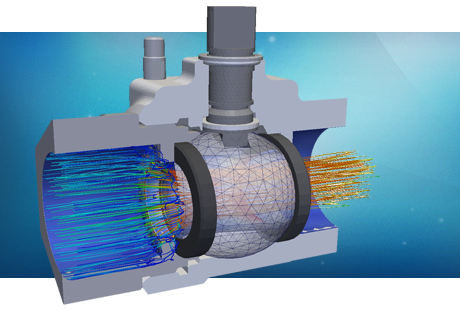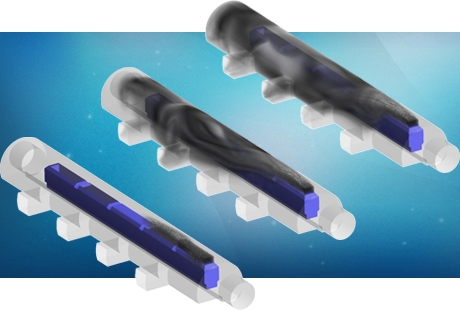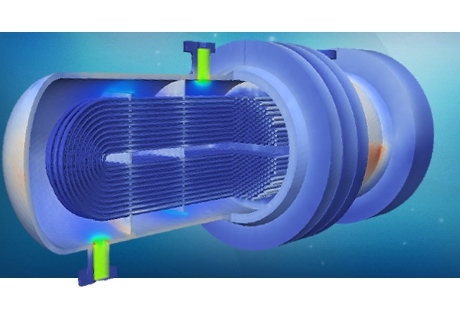Wind power
In 2013, installed wind power capacity in the European Union totalled 105,000 megawatts (7% of the EU's electricity) and 11.5% of new power capacity installed in 2012 corresponds to wind power (according to the EEA). Europe's onshore and offshore wind energy potential could power Europe many times over. However, capturing this potential energy and transforming it into a profitable source of power is not an easy task. Shrinking budgets and grants for renewable energies, commercial and political lobbying opposition from other energy sources and increasing competition have made wind power an uncertain market.

To get over this changing marketplace, investors are continuously on the lookout for increased yields, higher density wind sources and lower investment and maintenance costs. This quest puts designers, manufacturers and installers on the hook forcing them to optimise aerodynamics and electrical equipment, to constantly innovate in materials use and manufacturing techniques and to plan and install the wind farms in more and more challenging offshore scenarios.
PRE Technologies provides solutions and support for designers and manufacturers looking to stay in the vanguard of innovation along this challenging path. We do this thanks to our experience in wind power design and the use of advanced simulation and computational tools. We can help you with aerodynamic element design , mechanical stresses and deformations on static and moving parts, fatigue and vibrational studies of blades and towers as well as all kind of issues related to offshore idiosyncrasy, such as foundation and floating platform CFD studies or the evaluation of the impact of tides and waves in nacelle dynamic performance.

Having gone through a variety of challenging wind power projects, we are familiar with horizontal and vertical axis wind turbines (HAWT and VAWT), different rotor, gearbox, brake and generator types as well as the different on and offshore turbine foundations.
Offshore
Offshore wind is a developing technology and nobody has all the answers, or even knows all the questions. Every project presents its own, unique challenges. Sea bed foundation and floating devices are constantly evolving as new technology and field information become available. Each offshore approach fights its own technological problems. Seabed foundation turbines often face risks related to seafloor conditions such as scour and sand-dune migration while a floating turbine design needs to achieve sufficient operating stability with minimal nacelle movement.

On floating platforms, a key consideration is that continuous, but variable, forces from waves and wind introduce both linear and rotational movements impacting the floating lower foundation, which then are transferred and amplified at the higher elevations upward to the nacelle. Dynamic nacelle movements introduce acceleration forces into the system, which increase turbine loads at crucial component levels, for example in the rotor blade foot, pitch bearings and the drivetrain.
Offshore operation adds potential risks to the wind farm exploitation, such as accelerated materials fatigue and risks of premature turbine failure, that negatively affect turbine's reliability and availability as well as lifetime expectancy. For all these reasons, a thorough design and analysis of all components, from foundation elements to blade design, must be carried out. Here is where simulation and mathematical modelling play an indispensable role. PRE Technologies can perform concept validations of new technologies, optimise designs through iterative virtual prototype analysis and locate failure spots and failure modes of existing wind power installations. We follow all relevant standards and guidelines according to our customer’s specifications, such as BSI and IEC standards for onshore designs and DNV standards and recommended practices for offshore related projects.
For more information on other services for the energy sector, please go to the renewable energy services tab or contact us here.
Our services for this sector
Blade design
- Stress, fatigue and vibrational studies of blades,for HAWT and VAWT
- Influence on turbine's performance of ice and dirt build-up on the blades
- Wind farm layout studies for optimised output
Nacelle equipment & structures
- Stress, fatigue and vibrational studies of nacelle structure
- Dynamic analysis of rotating equipment under different load conditions
- Thermal analysis of electric equipment
- Dynamic and impact studies of nacelle under floating offshore conditions
- Modal analysis and resonant frequencies of the nacelle structure and components
Foundation structures
- Stress, fatigue and vibrational studies of onshore foundation structure
- Stress, fatigue and vibrational studies of offshore foundation structure
- Floating offshore foundation calculation
- Dynamic studies of wave impact on floating foundations
- Seabed foundation calculation on offshore structures







